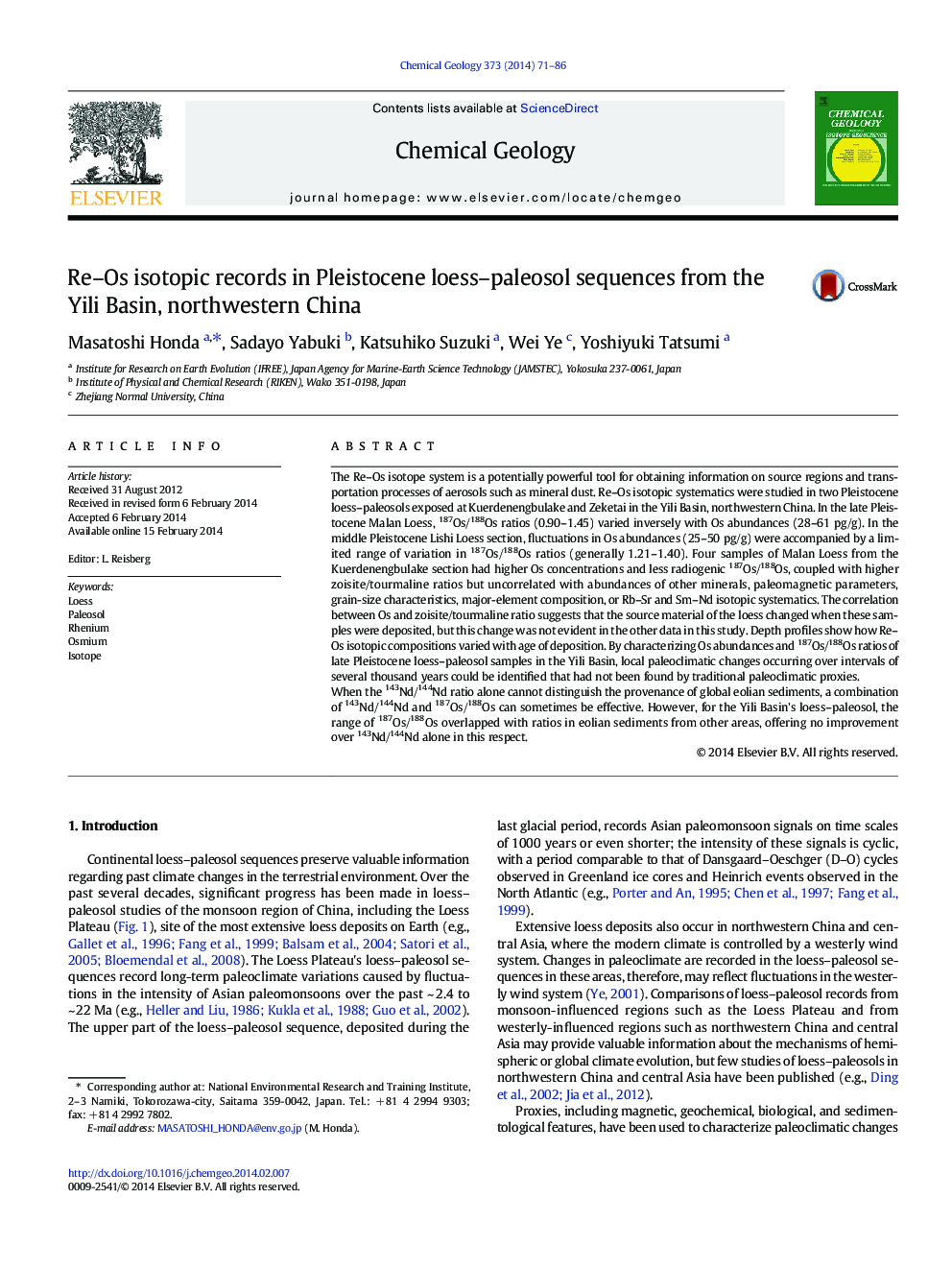| کد مقاله | کد نشریه | سال انتشار | مقاله انگلیسی | نسخه تمام متن |
|---|---|---|---|---|
| 6436663 | 1637597 | 2014 | 16 صفحه PDF | دانلود رایگان |

- We determined Re-Os isotopic characteristics of loess-paleosols from the Yili Basin.
- Os and 187Os/188Os may distinguish local climatic changes during late Pleistocene.
- Fluctuations of Os in the middle Pleistocene section may reflect paleoprecipitation.
- Effectiveness of 187Os/188Os to distinguish global aeolian sediments may be limited.
The Re-Os isotope system is a potentially powerful tool for obtaining information on source regions and transportation processes of aerosols such as mineral dust. Re-Os isotopic systematics were studied in two Pleistocene loess-paleosols exposed at Kuerdenengbulake and Zeketai in the Yili Basin, northwestern China. In the late Pleistocene Malan Loess, 187Os/188Os ratios (0.90-1.45) varied inversely with Os abundances (28-61Â pg/g). In the middle Pleistocene Lishi Loess section, fluctuations in Os abundances (25-50Â pg/g) were accompanied by a limited range of variation in 187Os/188Os ratios (generally 1.21-1.40). Four samples of Malan Loess from the Kuerdenengbulake section had higher Os concentrations and less radiogenic 187Os/188Os, coupled with higher zoisite/tourmaline ratios but uncorrelated with abundances of other minerals, paleomagnetic parameters, grain-size characteristics, major-element composition, or Rb-Sr and Sm-Nd isotopic systematics. The correlation between Os and zoisite/tourmaline ratio suggests that the source material of the loess changed when these samples were deposited, but this change was not evident in the other data in this study. Depth profiles show how Re-Os isotopic compositions varied with age of deposition. By characterizing Os abundances and 187Os/188Os ratios of late Pleistocene loess-paleosol samples in the Yili Basin, local paleoclimatic changes occurring over intervals of several thousand years could be identified that had not been found by traditional paleoclimatic proxies.When the 143Nd/144Nd ratio alone cannot distinguish the provenance of global eolian sediments, a combination of 143Nd/144Nd and 187Os/188Os can sometimes be effective. However, for the Yili Basin's loess-paleosol, the range of 187Os/188Os overlapped with ratios in eolian sediments from other areas, offering no improvement over 143Nd/144Nd alone in this respect.
Journal: Chemical Geology - Volume 373, 12 May 2014, Pages 71-86